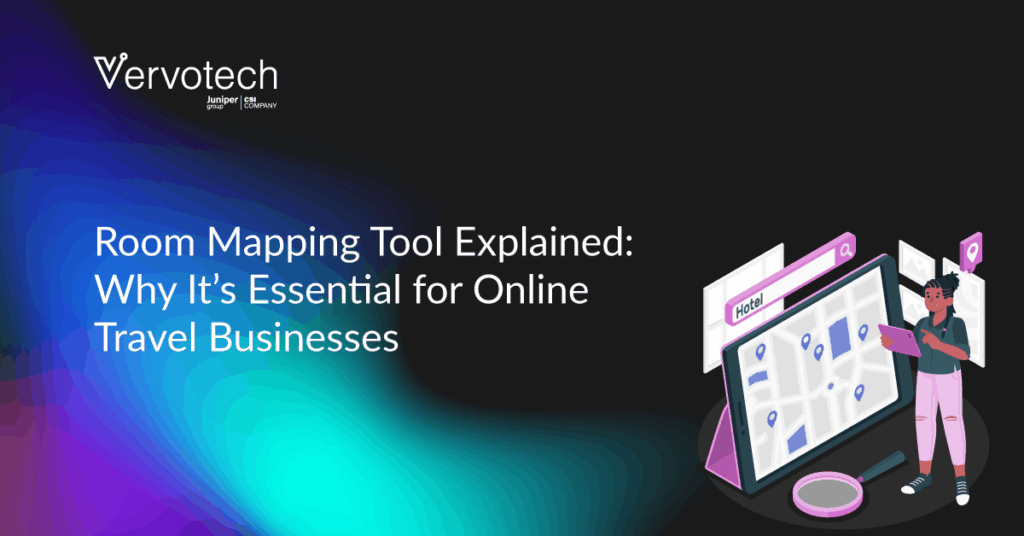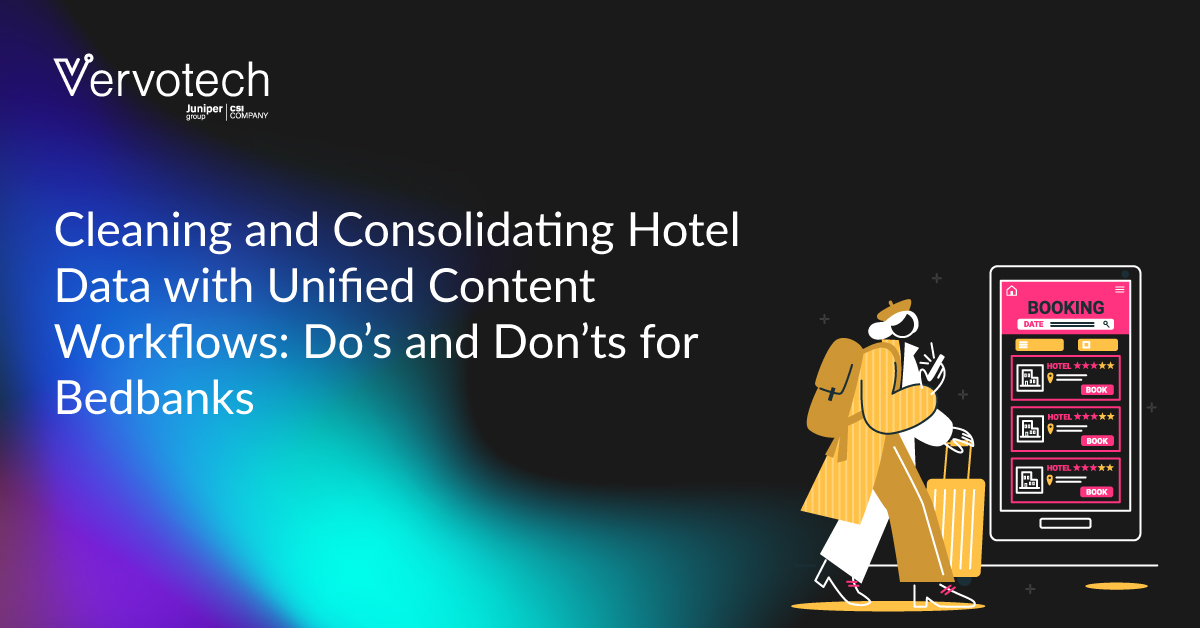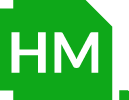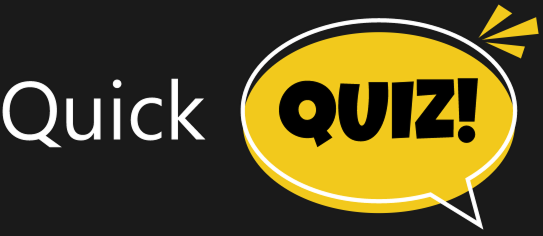A poor hotel booking experience is rarely the result of a single mistake. More often than once, it is a product of multiple small errors in hotel listings that quietly chip away at your customer’s experience and erode trust in your platform.
At the core of this problem sits messy, fragmented hotel room data sourced from multiple suppliers. When each supplier describes the same room differently, the result is cluttered listings, operational inefficiencies, and booking errors that are hard to trace.
Solving this on a scale requires more than manual cleanup. It calls for a room mapping tool, a system designed to intelligently match and unify equivalent room types across supplier feeds, delivering clean, accurate, and consolidated room content.
In this blog, we’ll explore what a room mapping tool is, how it works, and why it has become essential infrastructure for modern travel businesses. Let’s first begin with understanding the process of Room mapping.
TL; DR
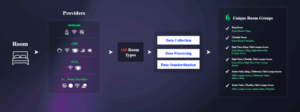 A room mapping tool analyzes room data from various integrated suppliers and checks for inconsistencies such as board type, bed type, amenities, view, smoking/non-smoking, etc., and then maps this data into a standard room type. This helps hotel booking platforms to offer a single, accurate & clean version of each room type from a hotel to the end customers, irrespective of the suppliers’ data.
An AI-native room mapping tool, unlike the manual mapping process, automates the entire process of room mapping, which ensures high data accuracy, faster updates, and scalability.
To understand it completely, let’s look at how it works.
Also Read: How to Choose the Best Room Mapping Software- Features & Benefits
A room mapping tool analyzes room data from various integrated suppliers and checks for inconsistencies such as board type, bed type, amenities, view, smoking/non-smoking, etc., and then maps this data into a standard room type. This helps hotel booking platforms to offer a single, accurate & clean version of each room type from a hotel to the end customers, irrespective of the suppliers’ data.
An AI-native room mapping tool, unlike the manual mapping process, automates the entire process of room mapping, which ensures high data accuracy, faster updates, and scalability.
To understand it completely, let’s look at how it works.
Also Read: How to Choose the Best Room Mapping Software- Features & Benefits
- Travel businesses often receive inconsistent room data from multiple suppliers, leading to duplicate listings, mismatches, and poor booking experience.
- A room mapping tool (or room mapping API) helps standardize and unify room-level content by identifying and matching equivalent rooms across suppliers.
- It works by collecting supplier data, analyzing room attributes, mapping similar listings to a single version, and delivering clean output via an API.
- A room mapping tool analyzes and maps room-level data from multiple sources. This ensures standardized listings, improves booking clarity, reduces manual operations, accelerates supplier onboarding, and directly boosts conversions.
- Key benefits of integrating a Room Mapping tool include- accurate, duplicate-free listings, better user experience, reduced manual effort, faster supplier onboarding, higher booking conversions, and more.
What Is Room Mapping- The Process
The room mapping process includes identifying and matching equivalent room types across multiple suppliers. For example, a “Deluxe King Room with an Ocean View” from one supplier may be listed as “Ocean View Deluxe King” by another. Though identical, they appear as separate options without mapping, confusing travelers and hurting conversions. Room mapping ensures that such variations are unified into a single, accurate room listing. It is a subset of hotel content standardization, focused specifically on room-level details rather than property-level information. Also Read: Room Mapping 101 for Online Travel Businesses & WholesalersWhat is a Room Mapping Tool?
A Room Mapping Tool, or most commonly called a Room Mapping API, is the enabler of Room Mapping- the process of identifying and unifying equivalent room types offered by different suppliers into a single, accurate listing. Without a tool to consolidate the room information, hotel booking platforms would continue to display erroneous or inaccurate hotel room details to the end users; a room mapping tool prevents such instances.But What Does a Room Mapping Tool Do?
 A room mapping tool analyzes room data from various integrated suppliers and checks for inconsistencies such as board type, bed type, amenities, view, smoking/non-smoking, etc., and then maps this data into a standard room type. This helps hotel booking platforms to offer a single, accurate & clean version of each room type from a hotel to the end customers, irrespective of the suppliers’ data.
An AI-native room mapping tool, unlike the manual mapping process, automates the entire process of room mapping, which ensures high data accuracy, faster updates, and scalability.
To understand it completely, let’s look at how it works.
Also Read: How to Choose the Best Room Mapping Software- Features & Benefits
A room mapping tool analyzes room data from various integrated suppliers and checks for inconsistencies such as board type, bed type, amenities, view, smoking/non-smoking, etc., and then maps this data into a standard room type. This helps hotel booking platforms to offer a single, accurate & clean version of each room type from a hotel to the end customers, irrespective of the suppliers’ data.
An AI-native room mapping tool, unlike the manual mapping process, automates the entire process of room mapping, which ensures high data accuracy, faster updates, and scalability.
To understand it completely, let’s look at how it works.
Also Read: How to Choose the Best Room Mapping Software- Features & Benefits
How a Room Mapping Tool Works
A room mapping tool uses a blend of data normalization and ML algorithms to identify inconsistencies in hotel room data. It takes input from various supplier feeds, processes them to detect similarities, and assigns a universal room ID for each unique room type.Here’s a step-by-step breakdown of how the room mapping tool works:
Step 1. Collects Room Data from Multiple Suppliers
The process begins by pulling in room inventory data from different suppliers or bedbanks. Each supplier may describe the same hotel room in unique ways with different names, codes, amenity tags, or even missing fields. The tool ingests this raw, unstructured data into a centralized system.Step 2. Parses and Normalizes Room Attributes
Once the data is collected, the tool breaks down each room listing into granular attributes like room type (e.g., Deluxe, Standard), bed type (e.g., King, Twin), amenities (e.g., Wi-Fi, Bathtub), views (e.g., Sea View), and occupancy limits. These attributes are normalized into a common format so that comparisons can be made accurately.Step 3. Identifies Potential Matches of Rooms Across Suppliers
Using a combination of rule-based logic and, in advanced tools, machine learning algorithms, the system evaluates room listings to determine which ones are likely to represent the same physical room, despite being described differently. For example, “Ocean View Deluxe Room” and “Deluxe King Room with Sea View” might be flagged as potential matches.Step 4. Maps Equivalent Rooms to a Unified Profile
Once the system confirms a match, it maps all variations of the room to a single master record or standard room ID. This unified profile consolidates room data from all suppliers, offering a single version of the truth that can be used across booking platforms.Step 5. Ships Mapped Room via API
The final output? A clean, standardized room list is delivered through a room mapping API or FTP. This enables real-time access to accurate room content, improving the booking experience for end users and reducing the need for manual data corrections. While this explains how the room mapping tool works, let’s take a look at all the advantages it brings along. Also Read: The Role of Room APIs in Enhancing Seamless Hotel BookingsWhat are the Benefits of Using a Room Mapping Tool?
Implementing a room mapping tool brings measurable improvements in hotel content quality and operational efficiency:1. Accurate Room Listings
The tool eliminates duplicates and standardizes inconsistent data, ensuring each room type is represented clearly and correctly across your platform.2. Improved Traveler Experience
When users see clean, consistent room options without confusion or clutter, their booking journey becomes smoother, increasing trust and satisfaction.3. Better Operational Efficiency
Automating room mapping significantly reduces manual data handling, allowing your team to focus on growth rather than error correction.4. Speeds Up Time-to-Market
New supplier feeds can be added and mapped quickly, accelerating inventory expansion without delays caused by data cleanup.5. Improved Conversion Rates
When room options are clear and accurate, travelers are more likely to complete their bookings, leading to higher conversion rates and revenue. Also Read: 7 formas de o mapeamento de salas ajudar a resolver os desafios da distribuição multicanal A room mapping tool is not just a back-end convenience, but a front-end driver of customer satisfaction and revenue growth for the platforms that integrate it, which brings us to another important discussion: who should use it? Let’s find out.Who Should Use a Room Mapping Tool?
Since a room mapping tool ensures accurate hotel room inventory, any business managing or distributing hotel inventory at scale should consider integrating a room mapping api into its workflow. This includes:- Online Travel Agencies (OTAs) that need accurate and consolidated room data across suppliers
- Bedbanks and Wholesalers that offer inventory to third-party resellers
- Metasearch Engines and Travel Aggregators that curate data from multiple sources
- Corporate Travel Platforms that ensure a reliable and standardized inventory for enterprise clients
